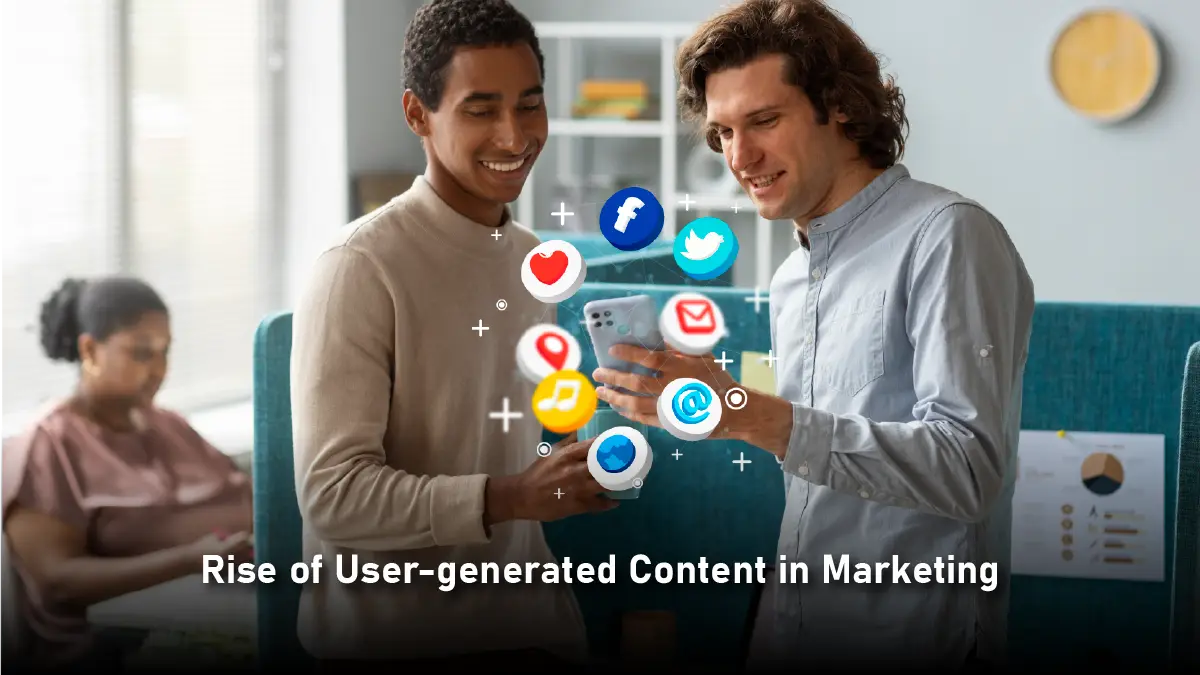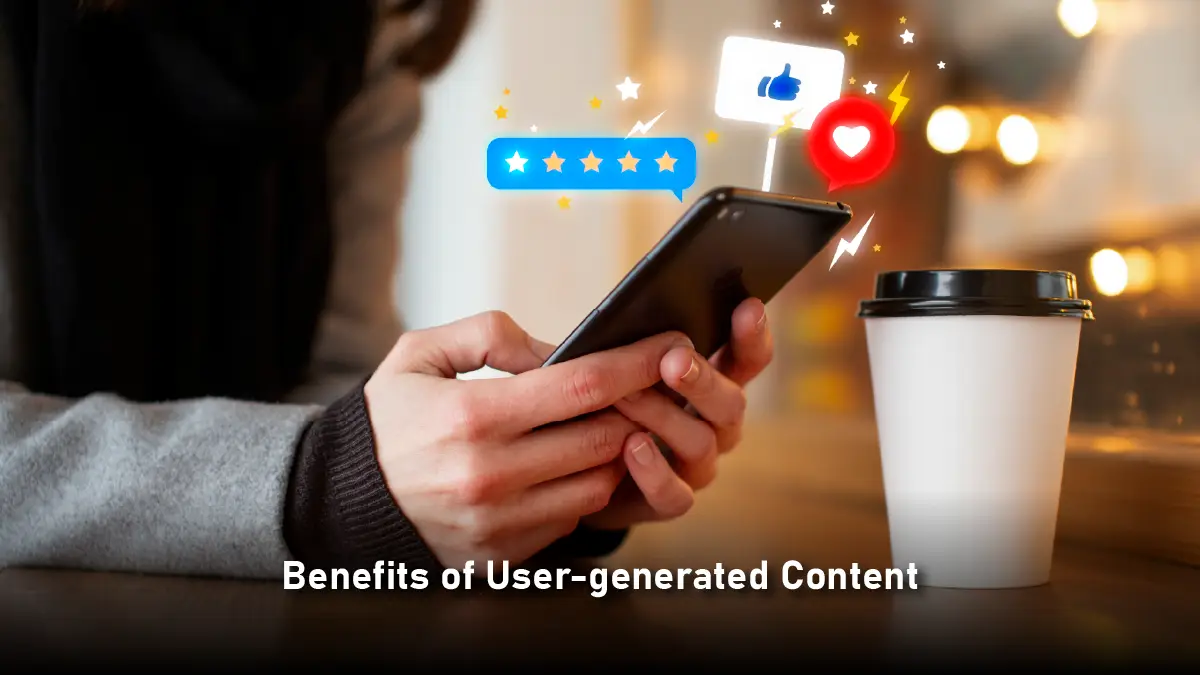User-generated content (UGC) has become a cornerstone of modern marketing, reshaping how brands connect with audiences in 2025. HubSpot reports that authentic customer content is now one of the top priorities for marketers, while Google’s Think with Google highlights that consumers increasingly rely on peer reviews and real experiences over traditional advertising when making purchase decisions.
From reviews and photos to short-form videos on TikTok and Instagram Reels, leveraging UGC allows brands to boost engagement, build trust, and influence purchasing decisions in ways traditional ads cannot.
Understanding User-generated Content
User-generated content (UGC) is any form of content created by individuals that highlights a brand, product, or service. This includes reviews, testimonials, photos, videos, social media posts, short-form videos, live streams, and interactive AR experiences.
According to HubSpot 2025, authentic customer content is among the top drivers of social media engagement, making it a vital tool for brands aiming to stand out in crowded digital spaces.
Google’s Think with Google also notes that consumers increasingly trust peer-created content over traditional advertising, underlining the power of UGC in shaping purchase decisions. By reflecting real customer experiences, UGC helps brands build credibility, foster trust, and create meaningful connections with their audiences.
Rise of User-generated Content in Marketing
 User-generated content (UGC) has become a central pillar of modern marketing as trust in traditional advertising continues to decline. HubSpot 2025 reports that brands leveraging UGC campaigns see significantly higher engagement rates than those relying solely on paid ads, underscoring its effectiveness in capturing consumer attention.
User-generated content (UGC) has become a central pillar of modern marketing as trust in traditional advertising continues to decline. HubSpot 2025 reports that brands leveraging UGC campaigns see significantly higher engagement rates than those relying solely on paid ads, underscoring its effectiveness in capturing consumer attention.
Consumers increasingly rely on authentic customer experiences to make purchase decisions, with Google’s Think with Google highlighting that peer-created content is a major influence on buying behavior across industries. Social media platforms like Instagram, TikTok, and Facebook amplify this impact, allowing brands to engage audiences directly while encouraging users to share their experiences.
According to Meta for Business, using branded hashtags and tagged posts helps increase content visibility and discoverability, enabling brands to reach a wider audience. TikTok Insights also indicates that short-form video UGC drives higher shares and interactions than static content.
By integrating UGC into marketing strategies, brands can boost visibility, foster community, and strengthen customer loyalty, making it indispensable in 2025.
Types of User-generated Content
Understanding the types of user-generated content (UGC) is essential for brands looking to maximize engagement and impact. In 2025, UGC comes in diverse forms:
Reviews & Testimonials: Customer feedback remains a cornerstone of social proof. Salesforce highlights that authentic reviews strongly influence consumer trust and purchase decisions.
Photos & Videos: Visual content ranging from product photos to unboxing videos offers immersive storytelling. Instagram and Pinterest continue to be key platforms for this content.
Short-Form Videos: TikTok, Instagram Reels, and YouTube Shorts have made short-form video UGC one of the most engaging content types. TikTok Insights shows these formats drive higher shares and interactions compared to static posts.
Contests & Challenges: Campaigns that invite users to create themed content foster community engagement while generating valuable marketing assets.
Interactive & AR Experiences: Augmented reality filters, live polls, and interactive streams allow users to co-create content, offering brands innovative ways to engage audiences.
Also Read: The Role of User-Generated Content in Building Exceptional Brands
Benefits of User-generated Content
 User-generated content (UGC) offers brands a wide range of benefits, making it a vital part of modern marketing strategies:
User-generated content (UGC) offers brands a wide range of benefits, making it a vital part of modern marketing strategies:
Authenticity & Trust: UGC provides genuine insights into customer experiences, which resonate more with audiences than polished brand content. Salesforce reports that 79% of consumers say UGC directly influences their purchase decisions, highlighting its role in building credibility and social proof.
Cost-Effectiveness: Leveraging content created by users reduces the need for extensive in-house content production, saving marketing budgets while showcasing real customer experiences.
Increased Engagement: UGC encourages interaction and sharing across social platforms. TikTok Insights indicates that short-form video UGC drives higher engagement and shares than static content, making it one of the most effective content types.
Valuable Consumer Insights: Analyzing UGC helps brands understand customer preferences, pain points, and emerging trends, informing product development and marketing strategies.
Community Building: Encouraging users to create and share content fosters a sense of belonging, loyalty, and advocacy. Engaged communities often produce more content, creating a positive feedback loop for the brand.
How to Run a Successful UGC Campaign?
Running a successful user-generated content (UGC) campaign requires a structured approach that aligns with your marketing objectives and engages audiences effectively:
Define Clear Objectives: Determine whether your goal is to increase brand awareness, drive sales, or foster a community. HubSpot 2025 notes that campaigns with clearly defined objectives see higher engagement and measurable ROI.
Encourage Participation: Motivate users through contests, giveaways, or branded hashtags. Rewards like discounts, exclusive product access, or social media shout-outs can boost participation and content volume.
Leverage Modern Platforms: Use Instagram Reels, TikTok, YouTube Shorts, and BeReal to reach audiences where they are most active. TikTok Insights confirms that short-form video UGC generates higher shares, interactions, and reach than static posts.
Monitor and Curate Content: Track user submissions, select high-quality posts, and give proper credit. HubSpot and Meta for Business provide analytics to identify top-performing content, while AI-powered tools can streamline moderation and curation.
Engage with the Audience: Respond to comments, acknowledge contributions, and highlight UGC across your channels. Active engagement encourages continued participation and strengthens brand loyalty.
Analyze Results: Measure reach, engagement, and conversions. Insights from TikTok and HubSpot can help refine strategies for future campaigns, ensuring continuous improvement and ROI.
How GoPro Leveraged UGC for Marketing Success: A Comprehensive Case Study
GoPro has set a benchmark for leveraging user-generated content (UGC) to drive brand engagement and community growth. By transforming its customers into brand advocates and content creators, GoPro has successfully increased both visibility and loyalty.
UGC-Driven Strategy: GoPro encourages users to share their adventures through initiatives like the Million Dollar Challenge, motivating submissions of high-quality photos and videos. In 2025, this strategy extends to TikTok and Instagram Reels, where short-form video UGC significantly amplifies reach and engagement (TikTok Insights).
Building a Connected Community: GoPro actively features user content on its social channels, creating a sense of belonging. Hashtags such as #GoPro, #GoProAwards, and #GoProReels make it easy for users to contribute, while TikTok Insights shows short-form UGC achieves higher interaction rates than static posts.
Strategic Partnerships: Collaborations with influencers and athletes continue to enhance brand identity and credibility. These partnerships, combined with community-generated content, strengthen brand advocacy and help GoPro remain top-of-mind in a competitive market.
Results & Impact: By integrating UGC across multiple platforms and formats, GoPro has boosted engagement, visibility, and customer loyalty. HubSpot notes that campaigns featuring authentic user content consistently outperform traditional marketing in reach and conversion, reinforcing the value of UGC for modern brands.
Conclusion
User-generated content (UGC) represents a transformative shift in how brands approach marketing. By leveraging authentic customer experiences through reviews, photos, videos, short-form content, and interactive AR experiences where brands can build trust, foster community, and drive engagement more effectively than traditional advertising.
In 2025, HubSpot reports that UGC remains one of the top priorities for marketers, while Google’s Think with Google highlights that consumers continue to favor peer-created content over conventional ads when making purchase decisions. By integrating UGC strategically across platforms like TikTok, Instagram Reels, and YouTube Shorts, brands can not only enhance visibility and loyalty but also influence purchasing behavior in meaningful ways.
Embracing UGC as a core marketing strategy ensures that brands stay relevant, credible, and connected in a digital landscape where authenticity reigns supreme.


Comments are closed.